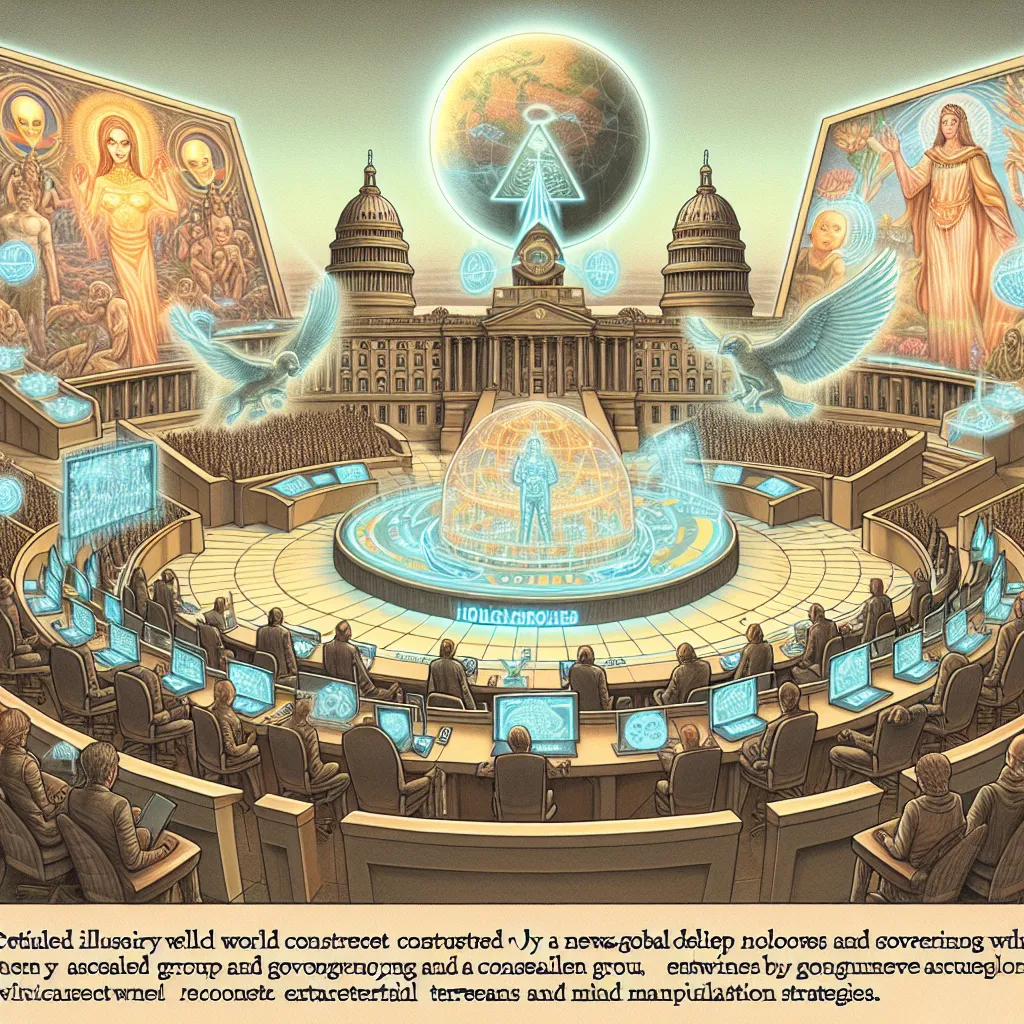Your world isn’t quite what it seems. Everything you believe might be an illusion, woven by a covert and potent organization aiming to manipulate the masses and introduce a new world order. They call this conspiracy Project Blue Beam. If it works, we’ll be blindsided. Borders will vanish, religions will crumble, and technology will be used against us.
The masterminds behind Project Blue Beam will use distractions like pandemics, odd weather patterns, and tales of UFOs being gunned down globally to keep us occupied. What’s alarming is that most people will embrace Project Blue Beam without resistance. Even more disturbing, it’s already in motion.
Serge Monast, an enigmatic figure born in Quebec in 1945, was an investigative journalist wary of the sinister powers at play in society. He believed that a secret elite, the Illuminati, were the puppet masters of our world. He risked everything to uncover the conspiracy. In 1994, he published his book “Project Blue Beam,” outlining a plan to establish a single world government.
Project Blue Beam began during the Cold War, a time when the U.S. and the Soviet Union were pouring resources into off-the-books technologies. Publicly, they built war machines, but secretly, they dabbled in mind control and psychic warfare, much like the CIA’s MK Ultra program, but with a futuristic twist. Project Blue Beam aimed to use advanced tech and psychological tricks to blur the line between reality and illusion.
Central to this scheme is a New Age religion, fundamental for their envisioned global dictatorship. They would need to dismantle existing religions by triggering artificial earthquakes and uncovering new archaeological “discoveries” that discredit long-held beliefs—just as how the Dead Sea Scrolls expanded biblical understanding. This could provoke a crisis of faith, making people susceptible to this new universal religion.
Holograms and augmented reality would play a vital role. Satellites would project 3D images and sounds to simulate a divine presence, a trick aimed at making people believe in a new god. These projections would merge religious figures into one, claiming they had been misinterpreted, promoting a single Antichrist figure.
Yet, such visual tricks alone wouldn’t convert everyone. The plan includes direct brainwave manipulation using microwaves—a technology swimming around us today in the form of cell phone signals, Wi-Fi, and more. This would implant messages directly into our minds, convincing even the skeptical that their god was speaking to them.
The final step of Project Blue Beam is the scariest—staging a catastrophic event that forces global unity out of fear rather than hope. Serge believed this could be done by faking an alien invasion. Recent UFO sightings and shoot-downs make you wonder. Are we seeing the beginnings of such a scenario?
Project Blue Beam would project a false extraterrestrial threat, pushing all nations to use nuclear weapons in defense and then disarm once the “invasion” is revealed as a hoax. In the aftermath, with cities in ruins, people would beg for a united global government for their safety, all according to the plan.
However, the logistics of such a massive deception seem implausible. Creating artificial earthquakes discreetly, convincing billions to abandon their religion, and projecting convincing holograms everywhere are enormous tasks. Not to mention, controlling the entire electromagnetic spectrum to manipulate thoughts is a colossal endeavor requiring unprecedented power and coordination.
Historically, attempts to suppress religion have failed spectacularly. Governments, from ancient Rome to modern regimes, found that faith and family bonds are too resilient. The technology for mind control, although advanced, is not yet foolproof or widely utilized at such scales. Plus, technical and operational expertise rests heavily on everyday people who are difficult to recruit en masse for such an elaborate plot.
Monast himself met a tragic end, dying under mysterious circumstances soon after being detained by authorities. His death fuels the theory but could also signify the dangers faced by whistleblowers challenging powerful entities.
In conclusion, while elements of Project Blue Beam echo possible truths and historical patterns, the entire narrative leans heavily on speculative fiction. The sheer scale of deceit and manipulation seems too vast to pull off unnoticed. Despite the fear-mongering, the strength of human connection and community resilience offers hope. The elites might have resources, but they lack the unity and collective resistance inherent in ordinary people. It’s crucial to stay informed and vigilant, appreciating the power of unity and skepticism in the face of such grand conspiracies.






